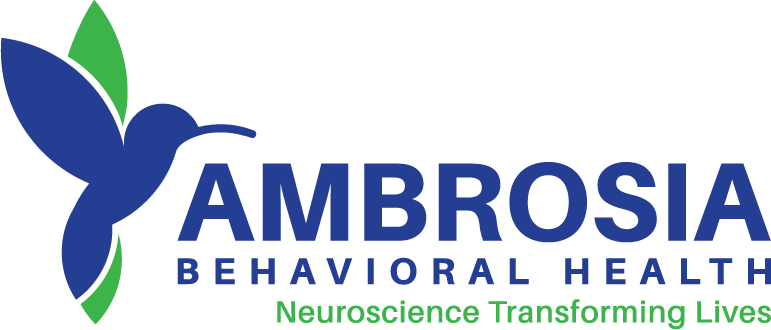Addiction Rates In Young Adults And College Students
“What do you want to be when you grow up?” Young adults are expected to answer that question, and the pressure can be tremendous. Choosing a college, picking a major, and keeping up grades eat up all spare time. If people decide to skip college, finding and keeping a good job becomes an all-consuming task.
For example, in the National Survey on Drug Use and Health, researchers pick a representative day and track how many students tried one type of drug for the very first time. The results show just how popular booze is among students. On a sample day:
- 2,179 students tried alcohol.
- 1,299 students tried marijuana.
- 649 tried hallucinogens.
- 559 tried prescription painkillers.
For college students, alcohol is part of life on campus. It’s served at parties, it’s discussed in classes, and it’s passed around at mealtimes. Alcohol is relatively easy for students to get, especially if they fraternize with college juniors or seniors who might be of buying age. Peer pressure can also play a role.
According to the National Institute on Alcohol Abuse and Alcoholism, close to 60 percent of fulltime college students drink alcohol monthly. That drops to about 48 percent when researchers examine people of the same age who aren’t enrolled in college.
For stressed students far from home, their peers become adjunct family members. If their peers drink, they join in. And for some students, that drinking spins out of control.
Alcohol delivers the appearance of calm and social grace. It can make worried students feel sophisticated and in control. Those same students can believe they need a drink to succeed at a party, and that can morph into needing a drink to simply talk with peers.
Since alcohol is readily available, college students can hide a drinking problem for months. To their peers, they may seem like the life of the party. Deep inside, these students are struggling.
Alcohol abuse in college students has been linked to:
- Car accidents. Slow reflexes and poor coordination can combine when students slip behind the wheel. They can harm themselves or others in an instant they may not even remember.
- Students hopped up on alcohol can feel their tempers flare, and since the substance lowers inhibitions, they see no reason not to act on the aggressive impulse.
- Students can also trip, slip, or fall while intoxicated and break bones or suffer lacerations.
- Unprotected sex. Students who feel tipsy and comfortable make decisions they wouldn’t otherwise make. That can lead to sexually transmitted diseases or pregnancies.
What Other Substances Do Students Abuse?
Young adults and college students may abuse:
- As many states move to legalize cannabis, it’s easier for young people to purchase and use. The National Institute on Drug Abuse says rates of daily marijuana abuse were higher in 2016 than rates seen since the 1980s. Among college students, about 5 percent use daily. Among those who didn’t go to college, about 13 percent use each day.
- Prescription stimulants. College students are particularly vulnerable to the allure of so-called “study drugs” like Adderall. These prescription medications are made to help people deal with ADHD, but students feel the ingredients help them focus and endure late-night study sessions. Researchers say about 30 percent of students abuse these substances, and the longer they’ve been in school, the more likely abuse is.
- It’s no secret that the United States is in the grips of an opioid epidemic. People all across the country are using these drugs to get high, not kill pain, and once they start using, they find it hard to stop. College students aren’t immune. Researchers say prescription painkiller abuse rates in young adults rose 343 percent between 1993 and 2005.
- Drugs like Valium and Klonopin are often described as alcohol without the hangover. Young people driven to distraction by worry and stress can slip a pill into their mouths and feel that stress melt away very quickly. These drugs can be catastrophic for students, as they tend to cause persistent brain changes. After repeated use, students can feel incredibly ill when they attempt to get sober. Often, students need months to taper away from these drugs, and that’s time taken from their studies and their careers.
- Novel drugs. Young people are driven by ambition, and they know that an arrest can lead to devastation. Novel drugs sold as “bath salts” or “research chemicals” promise a strong high without legal problems. When states ban one formulation of their drugs, dealers shift the recipe accordingly. Students can order these drugs online, or in some states, they can buy them from so-called “head shops” for a weekend buzz.
These may seem like strict categories, but college students and young adults can also be drug connoisseurs who mix and match substances to meet their needs. They might use stimulants to help them during a difficult period, and then, they might lean on alcohol to help them come down and sleep.
A savvy young person can believe that this mixing and matching is a sign of superior intelligence and a “life hack.” But the damage done to delicate brain circuitry is immense.
How Can We Help?
College administrators, for example, are looking for ways to support students who enroll with preexisting addiction issues. Sober houses wrap young people in support from sober peers, and many offer counseling and 12-step support to encourage ongoing sobriety.
The Hechinger Report suggests that there are more than 200 such recovery programs across the country. Many more are needed, of course, but this is an idea that seems to be building steam.
College administrators are also looking for ways to reduce substance abuse on campus. A tag of “party school” is no longer considered part of a positive marketing program. Administrators can:
- Enforce campus punishments, including expelling students, for possession or intoxication.
- Inspect known party places, including fraternities.
- Instill strict sober rules on campus, including avoiding the use of alcohol at alumni events.
- Holding periodic campus training programs to teach students about the dangers of drug use.
Communities are taking many of the same steps to combat opioid addictions. Young people not enrolled in higher education may not have the same umbrella covering them from the dangers, but they may have community awareness and treatment programs that can help them to either prevent or treat an addiction issue.
Whether a young person is in college or the community, treatment programs tend to be similar. Experts hope to shine a light on the stresses that lead to substance abuse, and they aim to help people understand how to handle these triggers without relapsing to drug use.
Young people might explore issues relating to stress, childhood, careers, or finances in therapy. The lessons they learn could help them get sober, and they can help them grow into role models for the next generation of students and young adults.








